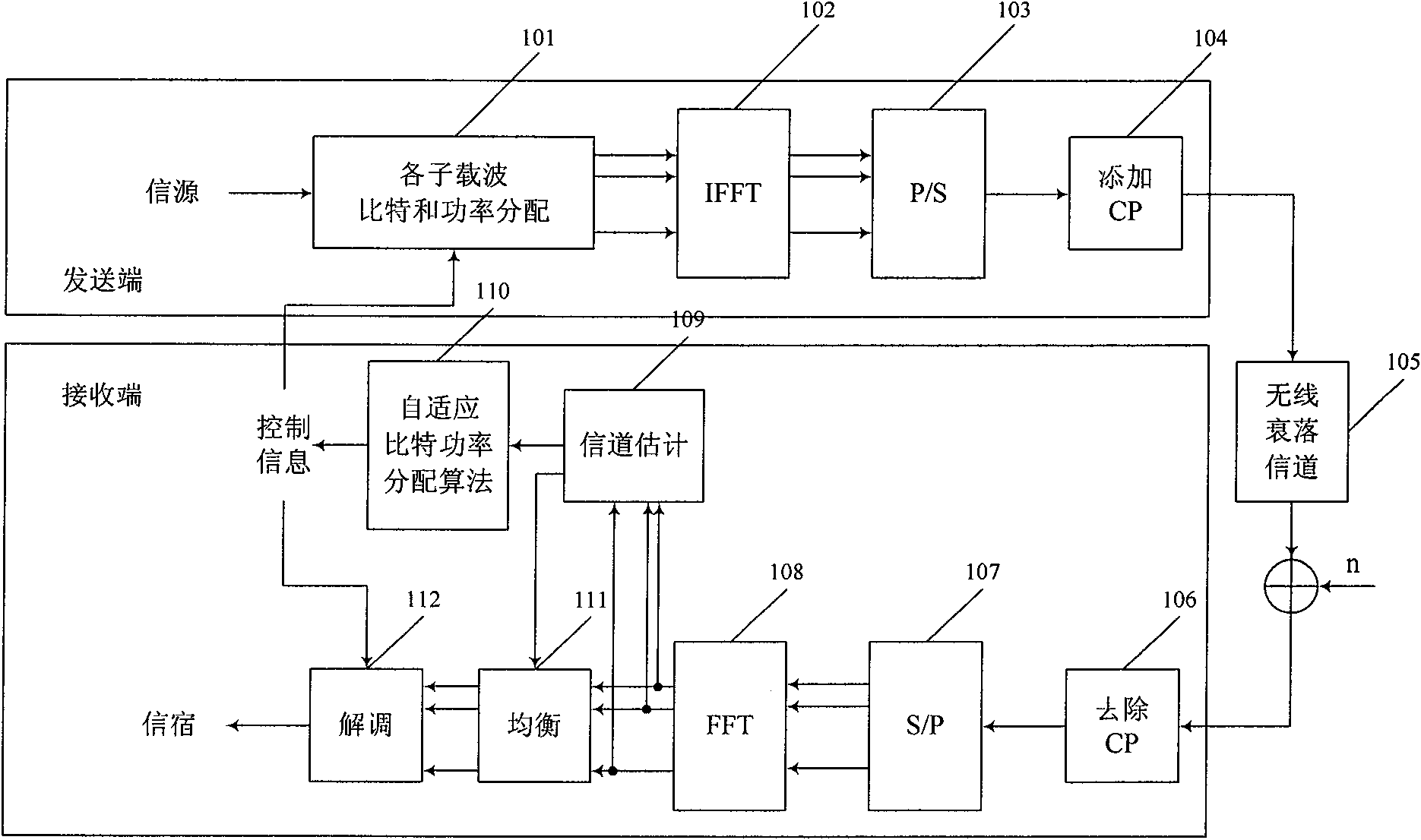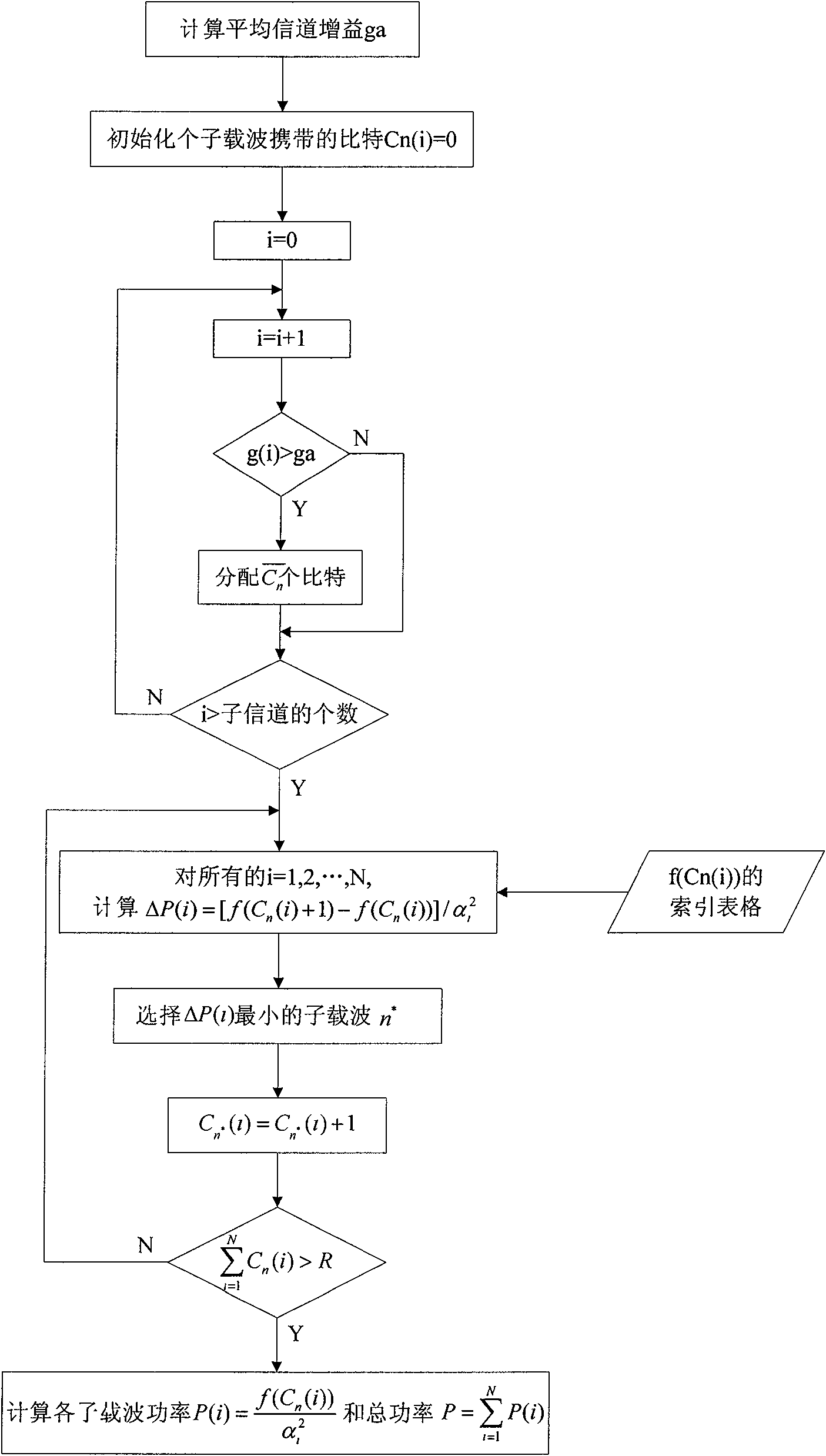Self-adapting bit power allocation method based on bit preallocation
A distribution method and special power technology, applied in power management, electrical components, sustainable buildings, etc., can solve the problems of reducing algorithm implementation complexity and implementation complexity, and achieve the effect of reducing time complexity and avoiding iterative process
- Summary
- Abstract
- Description
- Claims
- Application Information
AI Technical Summary
Problems solved by technology
Method used
Image
Examples
Embodiment Construction
[0056] See figure 1 , figure 2 As shown, taking the OFDM communication system with the number of subcarriers as N as an example, considering that the optional modulation modes of adaptive modulation are non-transmission, QPSK, 16QAM and 64QAM, an adaptive bit power allocation method based on bit pre-allocation in the present invention , the specific steps of the method are as follows:
[0057] Step 1: Instantaneous CSI estimation
[0058] The receiving end obtains the instantaneous CSI corresponding to all subcarriers through channel estimation, that is, α i (i=1, 2, . . . , N).
[0059] Step 2: Bit pre-allocation
[0060] (1) Calculate the average channel gain ga = Σ i = 1 N α i / N ;
[0061] (2) Assign bits C to subcarriers with channel gain greater than ga n (i)=C n =3, the numbe...
PUM
 Login to View More
Login to View More Abstract
Description
Claims
Application Information
 Login to View More
Login to View More - R&D
- Intellectual Property
- Life Sciences
- Materials
- Tech Scout
- Unparalleled Data Quality
- Higher Quality Content
- 60% Fewer Hallucinations
Browse by: Latest US Patents, China's latest patents, Technical Efficacy Thesaurus, Application Domain, Technology Topic, Popular Technical Reports.
© 2025 PatSnap. All rights reserved.Legal|Privacy policy|Modern Slavery Act Transparency Statement|Sitemap|About US| Contact US: help@patsnap.com



